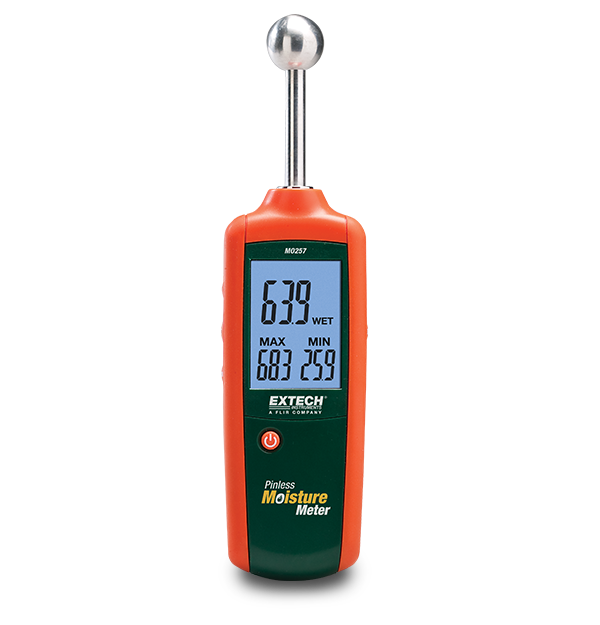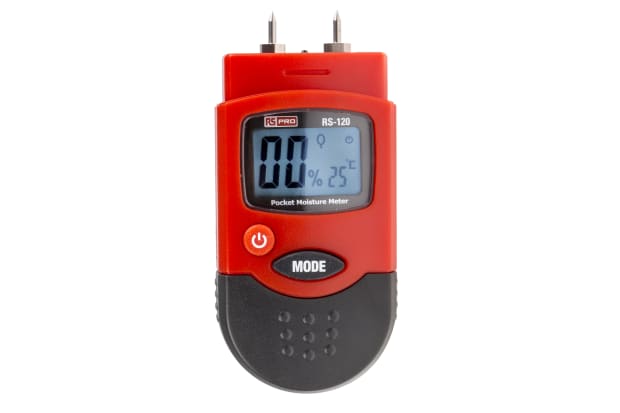The Ultimate Guide to Selecting the Right Moisture Meter for Your Requirements
The Ultimate Guide to Selecting the Right Moisture Meter for Your Requirements
Blog Article
Understanding the Significance of a Dampness Meter in Protecting Against Mold And Mildew and Water Damage in Your Home
In the world of home upkeep, the visibility of wetness can typically be a silent yet formidable foe, capable of creating prevalent mold growth and insidious water damages if left uncontrolled. Understanding the significance of a wetness meter in this fight is not simply an option yet a critical necessity.

Importance of Wetness Detection
Efficient wetness detection techniques are vital for guarding homes and protecting against prospective mold and mildew development and water damages. Dampness can leak into different building materials, leading to architectural issues and carcinogen - Moisture Meter. By making use of a dampness meter, homeowner can proactively recognize areas susceptible to excess moisture, permitting prompt treatment and mitigation strategies
Wetness meters provide exact analyses of wetness degrees in different materials such as drywall, concrete, and timber. This information assists in pinpointing locations of problem, even in hard-to-reach or covert locations. Early discovery of dampness accumulation allows punctual repair work or adjustments to stop further damages.

Just How Wetness Meters Job
Dampness meters play a critical role in the positive recognition of excess dampness, aiding in the prevention of possible mold growth and water damage by supplying accurate analyses of moisture levels in numerous structure products. Some advanced moisture meters pin both combine and pinless technologies for thorough moisture discovery. Understanding how moisture meters function is necessary for accurate and prompt wetness degree evaluations, making it possible for reliable precautionary procedures against mold and water damage.
Finding Early Caution Signs
Upon first inspection of a building, acknowledging subtle indicators of excess wetness comes to be vital in the early detection of potential mold growth and water damage. Some typical very early indication consist of musty smells, water discolorations on ceilings or wall surfaces, peeling off paint or wallpaper, and warped or stained surface areas. Stuffy odors typically indicate the presence of mold or mildew, even if no visible signs appear. Water stains can indicate leakages or seepage, while peeling off paint or wallpaper might be an outcome of wetness compromising the bond of these materials to the surface area. Warped or tarnished surfaces, such as buckling floorboards or blemished drywall, are clear indications of water damage. Moisture Meter. Furthermore, a boost in allergy signs or respiratory system issues amongst residents may suggest the existence of mold due to excess wetness. By promptly identifying and attending to these very you can try here early caution indicators, home owners can alleviate the threat of comprehensive mold and mildew development and water damage in their residential or commercial properties.


Stopping Mold And Mildew Development
Acknowledging very early warning indicators of excess moisture within a property not just enables punctual detection of prospective mold growth and water damage yet likewise offers as a proactive step in stopping the proliferation of mold and mildew. To effectively avoid mold and mildew development, it is critical to resolve any type of sources of moisture promptly.
In addition to attending to moisture sources, maintaining interior moisture degrees listed below 60% can substantially hinder mold development. Appropriate air flow, sufficient insulation, and using a/c unit or fans can help regulate interior humidity degrees. Checking wetness degrees in areas vulnerable to dampness, such as basements and creep rooms, using a dampness meter can additionally aid in very early discovery of elevated wetness degrees and possible mold development. By taking positive procedures to stop excess moisture and mold development, home owners can guard their home and interior air quality.
Advantages of Routine Surveillance
Routine tracking find out here of moisture degrees in a home can play an essential role in preserving a healthy and balanced indoor atmosphere and preventing possible mold and water damage. By regularly inspecting moisture degrees, home owners can identify any kind of concerns immediately and take required activities to protect against mold and mildew growth and water damage.
In addition, normal tracking permits home owners to track patterns and patterns in moisture levels with time. By developing a standard and surveillance modifications, individuals can recognize any kind of locations of problem or prospective vulnerabilities in the home's framework. This data-driven strategy allows targeted treatments and upkeep efforts to address underlying issues prior to they escalate into more significant issues. Ultimately, the constant monitoring of dampness degrees empowers house owners to safeguard their building, protect their health and wellness, and preserve the these details stability of their interior setting.
Conclusion
In final thought, the use of a moisture meter is crucial in preventing mold and water damages in homes. By spotting early caution indicators of dampness, property owners can take positive steps to prevent mold and mildew growth and expensive repairs.
By using a dampness meter, building proprietors can proactively identify areas prone to excess moisture, enabling for timely treatment and reduction methods.
Dampness meters provide accurate readings of wetness levels in various materials such as timber, drywall, and concrete.Wetness meters play a crucial duty in the aggressive recognition of excess dampness, assisting in the avoidance of possible mold and mildew development and water damage by supplying precise analyses of wetness levels in different building materials. Recognizing how moisture meters function is important for exact and prompt dampness degree assessments, enabling reliable preventative actions versus mold and water damage.
Checking moisture degrees in locations susceptible to moisture, such as cellars and creep rooms, using a moisture meter can likewise help in very early discovery of raised dampness degrees and prospective mold and mildew growth.
Report this page